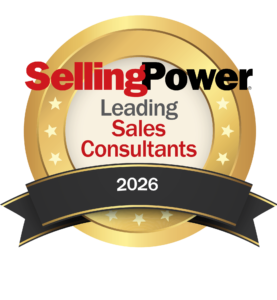How B2B Sales Teams can Leverage Big Data like B2C

There’s a large misconception that “big data” only applies to consumer brands. If B2B sales teams believe in this myth, they are holding themselves (and their commission checks) back.
As a B2B sales professional, you can use data to grow sales. With the right mindset you can do it today – easily and inexpensively, without spending millions of dollars and several years building out your infrastructure. Here are three things to consider.
1. Be Hypothesis Driven
You might be thinking, “I have no data.” Or, on the flip side, you may be asking yourself, “Where do I start? There is too much data!” Here’s the answer: Come up with your theories first, then look for the data you need to support or reject your hypothesis.
Take a look at what’s working and what’s not. From there, theorize about how you can grow your business. Then, determine what the right advanced analytics tactics and data sources would be to prove or disprove your premise. For example, let’s say your close rate is lower than you need. It has fallen from 25 percent to 15 percent over the past 12 months. Ask – what has changed? Well, your company hired a new CMO and she changed the lead generation strategy. Maybe this means you’re not getting better quality leads as expected. In fact, you’ve noticed that, when you’re selling into the automotive industry, you’re having a heck of a time.
You’ve stumbled upon your first hypothesis: We’re spending too much money generating leads in industries that aren’t a fit for our product.
Working collaboratively with the new CMO (sales and marketing must be best friends for any of this to work), you look at the data and find that, when the lead comes from the software, business services, or industrial manufacturing space the close rate is nearly 50 percent; however, when it comes from the automotive, non-profit, or retail space, your team can’t close anything. Bingo – you’ve found a simple way to use data to help your CMO find higher quality leads.
2. Be Unique
Data gives us the license to be creative. Now that we’ve found an insight (which industries are best fits for us), let’s get the right side of the brain going.
It starts with ignoring best practices. Yes, there is a time and place for best practices – they serve as a menu of options. But, if you do the same exact thing as your competitors all the time, you will never catch or pass them.
Ask yourself, “How can I do something none of my competitors are doing?” Usually this means finding an under-served niche or channel within your prospect and customer databases, then serving them in a novel way.
In this example, what can you do to best serve the software industry without copying what your competitor is doing?
3. Be Willing to Fail and Learn
If you get upset when something fails, then, I am sorry to say, you’re not going to be successful in this environment. Data supports us to fail by design. It gives us confidence that what we try is more likely to work than not, and it also provides a safety net. We can quickly see whether or not something is working. We can then double down on the winners – and correct course on what isn’t working.
You need to be disciplined about tracking what is and is not working. This means being scientific about things like who you’re calling on, who is making the call, how you are approaching the prospect, how you’re positioning your brand, what sales playbook you’re operating from, etc.
Intentionally experiment. Try two different sales scripts and see which one outperforms; then, try to make the losing script better and beat the winner in a subsequent round. Make it fun – set up a tournament-style sales script bracket for your team. Don’t beat yourself up if something goes wrong. View it as part of the experimentation process.
Data science is not just for the big direct-to-consumer brands. B2B companies can benefit just as much as – if not more than – our B2C friends. There’s no need to start with fancy algorithms or expensive data marts. Just be hypothesis driven, try new things, and be sure to measure results and change your approach accordingly. You’ll be well on your way to using data to dramatically accelerate your sales growth.
Rob Ristagno is founder and CEO of Sterling Woods Group.
Get our Enewsletter
Get the latest sales leadership insight, strategies, and best practices delivered weekly to your inbox.
Sign up NOW →